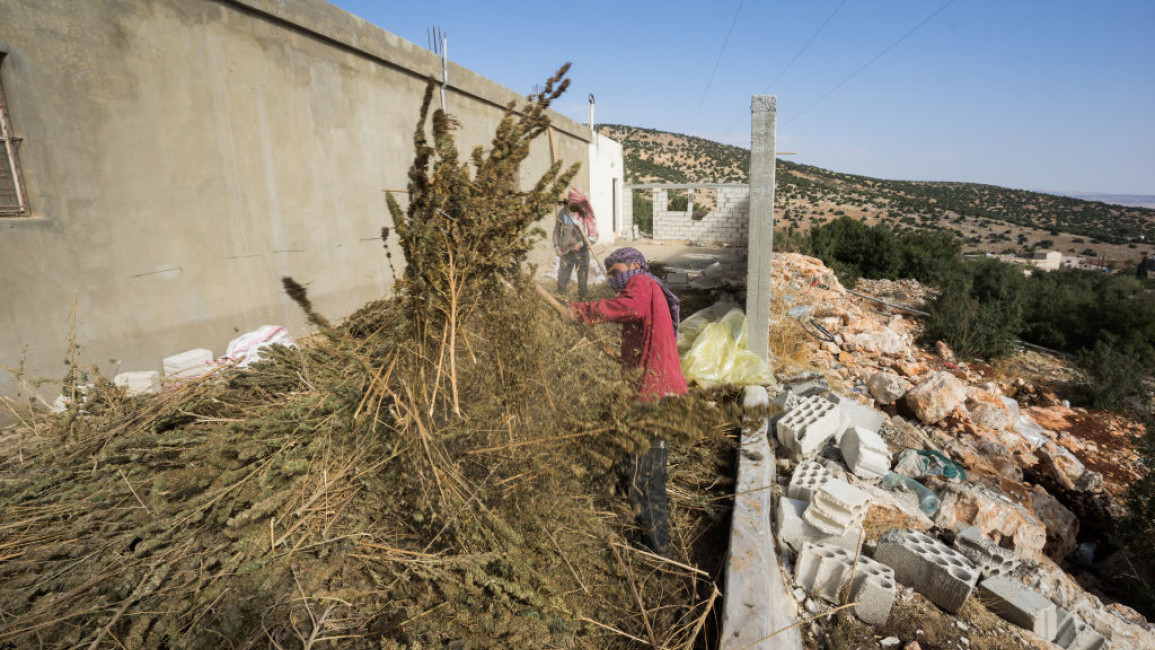
Reclaiming identity through hemp in the Lebanese valley of hashish
Tessa Fox
NEW ARAB
Across Lebanon, the infamous Lebanese region of Beqaa Valley is synonymous with hashish cultivation. Deprived of opportunity, and segregated from society, one Lebanese man has chosen to buck the stereotype and has since sparked a hemp revolution.
The Lebanese state, as Chamas said, has left them to their own accord since 2012, “because all the tribes made an agreement that if someone came to destroy the crops or arrest us, or put their hand on the plants, they’ll be killed.”
While this tribal law has long protected the main income of many families in the area, as a child Chamas felt trapped by the customs of the village, as well as isolated from other avenues of knowledge and culture.
“I had no personality because the system of society is based on fear... we don’t know what we want... there was only school, family and television here,” Chamas, now 36, said.
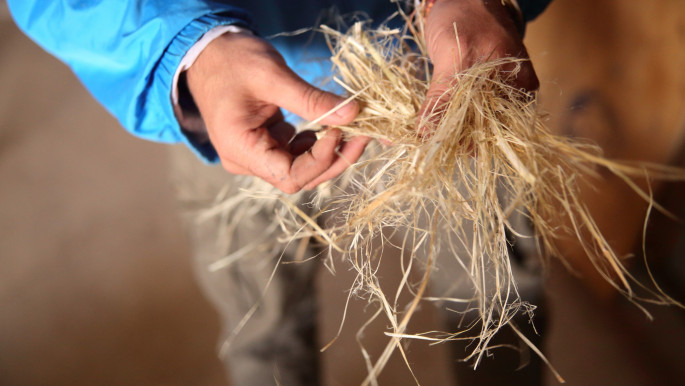
Chamas wants to share the knowledge and process of making hempcrete with all the surrounding villages, though if they use the hempcrete for business purposes, as Mohamed intends to, they also need to provide a space in the village for Chamas to create another library.
Seeing as producing the fibres by hand is so labour intensive, Chamas is hoping to buy a machine which can be installed in Boudai in order for the community to benefit from the hash stalks they normally burn.
Importing a machine for the fibres will certainly be expensive, though Chamas is hesitant to approach any NGO for support in funding it because they often don’t understand the identity or background of the community, and people of the region feel NGOs are trying to instil their own values, as he said.
“I know the people’s mentality here which is why I won’t bring books that will make problems… I don’t want to change the village, I just want to create a window, to work with the children… develop their tools, be connected [and] to know that there are choices in this life,” Chamas said.
Tessa Fox is a freelance journalist and photographer covering war and conflict, human rights and humanitarian affairs across the Middle East.
Follow her on Twitter: @Tessa_Fox
Across Lebanon, the infamous Lebanese region of Beqaa Valley is synonymous with hashish cultivation. Deprived of opportunity, and segregated from society, one Lebanese man has chosen to buck the stereotype and has since sparked a hemp revolution.
A defined rhythm is made as Hamza Chamas slaps dried, crunched up hashish stalks onto a plank of wood with nails sticking out of it, in order to soften and break up the fibres before brushing them with a metal comb to produce fine grass-like material.
It’s a raw and laborious way to convert the unused plants of hashish – which are planted and harvested in abundance in the Beqaa, in Lebanon’s east near Syria - into soft fibres which can then be used to make paper and textiles.
Born and raised in the village of Boudai, close to the ancient city of Baalbak but a two-hour drive from the capital of Beirut, Chamas has been experimenting with the many products that can be made from the hashish plant.
"The first thing people say when they know where we’re from is ‘ah you have hashish, oh you’re in a tribe so you kill people, also I have a stolen car, it must be in your village"
“Hash is grown everywhere here, but I’m the first person to be working in hemp,” Chamas told The New Arab, as he sat drinking coffee in his house surrounded by farmland.
Chamas describes all the by-products he uses from the hashish plant as hemp, whereas in places like America and Australia, hemp is a specific plant of the cannabis family that is grown only for its non-smokable products, such as fibres and seeds.
Boudai, and the nearby village of Yammouneh, are well known for producing hashish, and while it isn’t legal in Lebanon, the farms and producers are protected by the tribes of the region.
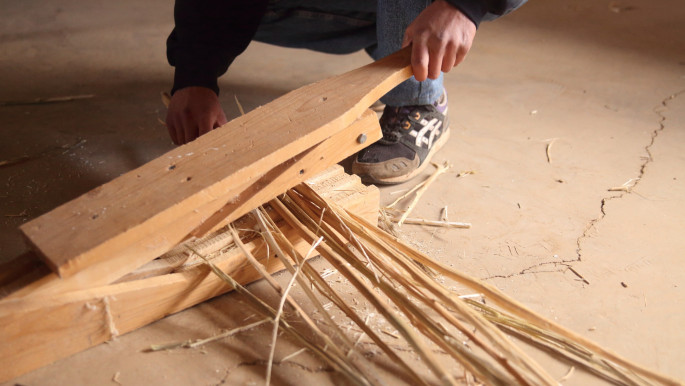
It’s a raw and laborious way to convert the unused plants of hashish – which are planted and harvested in abundance in the Beqaa, in Lebanon’s east near Syria - into soft fibres which can then be used to make paper and textiles.
Born and raised in the village of Boudai, close to the ancient city of Baalbak but a two-hour drive from the capital of Beirut, Chamas has been experimenting with the many products that can be made from the hashish plant.
"The first thing people say when they know where we’re from is ‘ah you have hashish, oh you’re in a tribe so you kill people, also I have a stolen car, it must be in your village"
“Hash is grown everywhere here, but I’m the first person to be working in hemp,” Chamas told The New Arab, as he sat drinking coffee in his house surrounded by farmland.
Chamas describes all the by-products he uses from the hashish plant as hemp, whereas in places like America and Australia, hemp is a specific plant of the cannabis family that is grown only for its non-smokable products, such as fibres and seeds.
Boudai, and the nearby village of Yammouneh, are well known for producing hashish, and while it isn’t legal in Lebanon, the farms and producers are protected by the tribes of the region.

The first process of making hemp fibres is crushing the dried stalks of the hashish plant
[photo credit: Tessa Fox]
The Lebanese state, as Chamas said, has left them to their own accord since 2012, “because all the tribes made an agreement that if someone came to destroy the crops or arrest us, or put their hand on the plants, they’ll be killed.”
While this tribal law has long protected the main income of many families in the area, as a child Chamas felt trapped by the customs of the village, as well as isolated from other avenues of knowledge and culture.
“I had no personality because the system of society is based on fear... we don’t know what we want... there was only school, family and television here,” Chamas, now 36, said.

After being crushed and then scraped through metal the hemp fibre becomes softer, almost ready to be used for making paper or textiles [photo credit: Tessa Fox]
As a kid, Chamas felt there were no resources to see what is possible or available outside of the village, and knew he was stereotyped because he was from Beqaa.
“The first thing people say when they know where we’re from is ‘ah you have hashish, oh you’re in a tribe so you kill people, also I have a stolen car, it must be in your village,’” Chamas explained.
After drifting in and out of studying and working in Beirut for seven years, meeting new friends in cultural spaces in the capital, but not “understanding anything because they were all talking about Marxism and liberalism,” Chamas made a post on Facebook that would change his life.
“I wrote: ‘The only source of knowledge in the village is the mother, the father and television, we need books to make a library for children.’ I knew if we had the knowledge we would be without fear,” he said.
From 2017 onwards, Chamas collected more than 2,000 books for the children of his village and forged ahead with creating a library in empty shop spaces, naming it Shahraban, after his mother.
The project gradually grew beyond loaning books to children in the summer holidays; he now provides workshops every two months for the youth of Boudai, ranging from the basics of photography, and cinema, or bringing musicians or rappers to help the kids make their own songs.
For a long time, the people in Boudai continued to tell Chamas that he was wasting his time, that he should get married and have children, and questioned how he would make money to eat.
"Everyone is familiar with hemp, but they know about it just to be smoked, they don’t know how to use it in the different ways Hamza is sharing"
This is how the idea of using hemp was born, as Chamas’ cousin once turned to him and said; “you bring books but how will we eat from them?”
Considering the seeds of the hashish plant are generally used as bird feed, Chamas decided to take them from the nearby farms and make hemp milk, nutritious plant-based milk with a nutty taste, made by blending hemp seeds with water.
“At the beginning, the people in the village thought they would get high from it,” Chamas said.
So he took the milk to a lab to test it and the results came back that THC – the psychoactive chemical in cannabis – wasn’t present, but it was indeed packed with protein, amino acids, vitamins and minerals such as phosphorus, potassium, magnesium and iron, which is why it has been labelled a superfood.
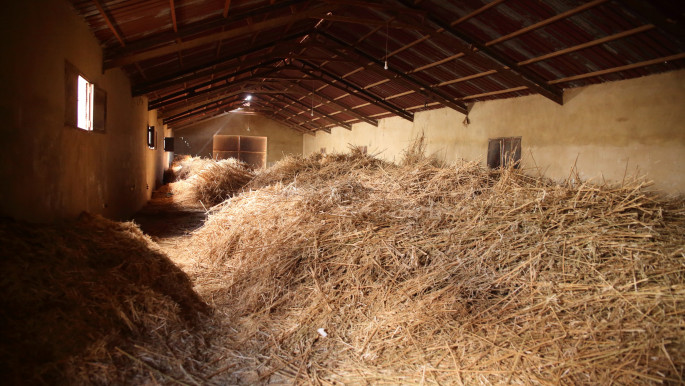
As a kid, Chamas felt there were no resources to see what is possible or available outside of the village, and knew he was stereotyped because he was from Beqaa.
“The first thing people say when they know where we’re from is ‘ah you have hashish, oh you’re in a tribe so you kill people, also I have a stolen car, it must be in your village,’” Chamas explained.
After drifting in and out of studying and working in Beirut for seven years, meeting new friends in cultural spaces in the capital, but not “understanding anything because they were all talking about Marxism and liberalism,” Chamas made a post on Facebook that would change his life.
“I wrote: ‘The only source of knowledge in the village is the mother, the father and television, we need books to make a library for children.’ I knew if we had the knowledge we would be without fear,” he said.
From 2017 onwards, Chamas collected more than 2,000 books for the children of his village and forged ahead with creating a library in empty shop spaces, naming it Shahraban, after his mother.
The project gradually grew beyond loaning books to children in the summer holidays; he now provides workshops every two months for the youth of Boudai, ranging from the basics of photography, and cinema, or bringing musicians or rappers to help the kids make their own songs.
For a long time, the people in Boudai continued to tell Chamas that he was wasting his time, that he should get married and have children, and questioned how he would make money to eat.
"Everyone is familiar with hemp, but they know about it just to be smoked, they don’t know how to use it in the different ways Hamza is sharing"
This is how the idea of using hemp was born, as Chamas’ cousin once turned to him and said; “you bring books but how will we eat from them?”
Considering the seeds of the hashish plant are generally used as bird feed, Chamas decided to take them from the nearby farms and make hemp milk, nutritious plant-based milk with a nutty taste, made by blending hemp seeds with water.
“At the beginning, the people in the village thought they would get high from it,” Chamas said.
So he took the milk to a lab to test it and the results came back that THC – the psychoactive chemical in cannabis – wasn’t present, but it was indeed packed with protein, amino acids, vitamins and minerals such as phosphorus, potassium, magnesium and iron, which is why it has been labelled a superfood.

A shed filled with hashish plant stalks in Boudai village, normally burnt but saved by Hamza Chamas to make fibres for paper, textiles and hempcrete [photo credit: Tessa Fox]
Chamas often goes to Beirut to sell the hemp milk as well as cakes he makes from the milk and seeds, to generate income to support the library in Beqaa.
“In the future, the library will be fully funded from the hemp products... to create this circle of knowledge, economy and culture,” he envisioned.
His library workshops have also expanded to include how to make the milk, as well as fibres which can be used to make paper and textiles, and more recently hempcrete – a natural building material made from hemp fibres, clay and lime to replace conventional bricks or cement.
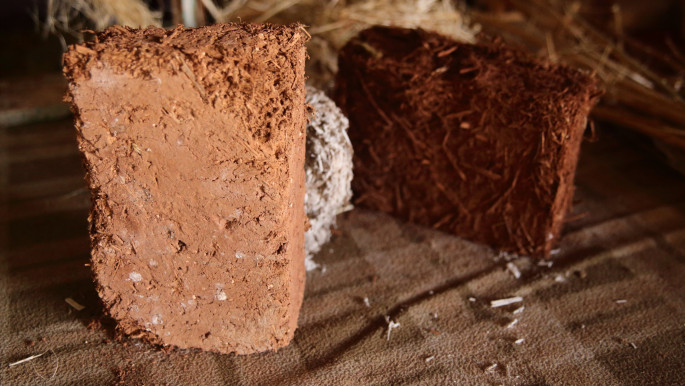
Chamas often goes to Beirut to sell the hemp milk as well as cakes he makes from the milk and seeds, to generate income to support the library in Beqaa.
“In the future, the library will be fully funded from the hemp products... to create this circle of knowledge, economy and culture,” he envisioned.
His library workshops have also expanded to include how to make the milk, as well as fibres which can be used to make paper and textiles, and more recently hempcrete – a natural building material made from hemp fibres, clay and lime to replace conventional bricks or cement.

Various samples of hempcrete blocks were made by Hamza Chamas and his community. The darker block has more clay in the mix while the white brick has more lime added [Tessa Fox]
Raneen Chamas, 25, first learnt how to make paper and textiles from Chamas in Boudai and loved the creative process of it.
“It’s like you’re recycling the gifts of your soil and land by not throwing it away for nothing,” Raneen Chamas told The New Arab.
“By making paper to write on… you’re using nature to learn and teach more,” she continued.
Raneen Chamas also believes using the hemp will improve the village economically seeing as so many people already grow the crop.
“Everyone is familiar with hemp, but they know about it just to be smoked, they don’t know how to use it in the different ways Hamza is sharing,” she said.
He feels his community is too busy working in farming the money crops of hash, as well as apples to a lesser degree, so would be less interested in making hemp milk at home.Mohamed, 30, from Yammouneh – who didn’t want to share his last name for fear of the police monitoring his village - is interested in building chalets out of hempcrete blocks.
“The main concern is to sell hash [to generate income] but if they see that the hempcrete is working they would start building with it,” Mohamed told The New Arab.
Raneen Chamas, 25, first learnt how to make paper and textiles from Chamas in Boudai and loved the creative process of it.
“It’s like you’re recycling the gifts of your soil and land by not throwing it away for nothing,” Raneen Chamas told The New Arab.
“By making paper to write on… you’re using nature to learn and teach more,” she continued.
Raneen Chamas also believes using the hemp will improve the village economically seeing as so many people already grow the crop.
“Everyone is familiar with hemp, but they know about it just to be smoked, they don’t know how to use it in the different ways Hamza is sharing,” she said.
He feels his community is too busy working in farming the money crops of hash, as well as apples to a lesser degree, so would be less interested in making hemp milk at home.Mohamed, 30, from Yammouneh – who didn’t want to share his last name for fear of the police monitoring his village - is interested in building chalets out of hempcrete blocks.
“The main concern is to sell hash [to generate income] but if they see that the hempcrete is working they would start building with it,” Mohamed told The New Arab.
Chamas wants to share the knowledge and process of making hempcrete with all the surrounding villages, though if they use the hempcrete for business purposes, as Mohamed intends to, they also need to provide a space in the village for Chamas to create another library.
Seeing as producing the fibres by hand is so labour intensive, Chamas is hoping to buy a machine which can be installed in Boudai in order for the community to benefit from the hash stalks they normally burn.
Importing a machine for the fibres will certainly be expensive, though Chamas is hesitant to approach any NGO for support in funding it because they often don’t understand the identity or background of the community, and people of the region feel NGOs are trying to instil their own values, as he said.
“I know the people’s mentality here which is why I won’t bring books that will make problems… I don’t want to change the village, I just want to create a window, to work with the children… develop their tools, be connected [and] to know that there are choices in this life,” Chamas said.
Tessa Fox is a freelance journalist and photographer covering war and conflict, human rights and humanitarian affairs across the Middle East.
Follow her on Twitter: @Tessa_Fox
No comments:
Post a Comment